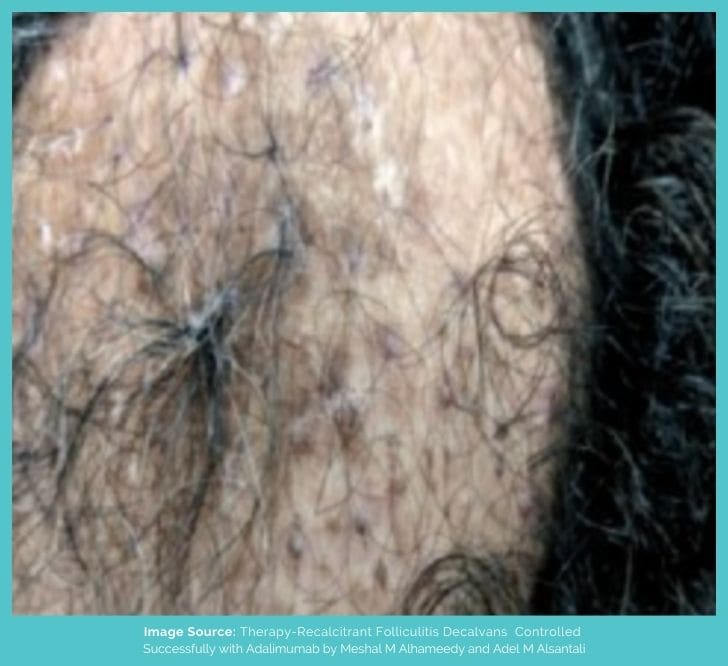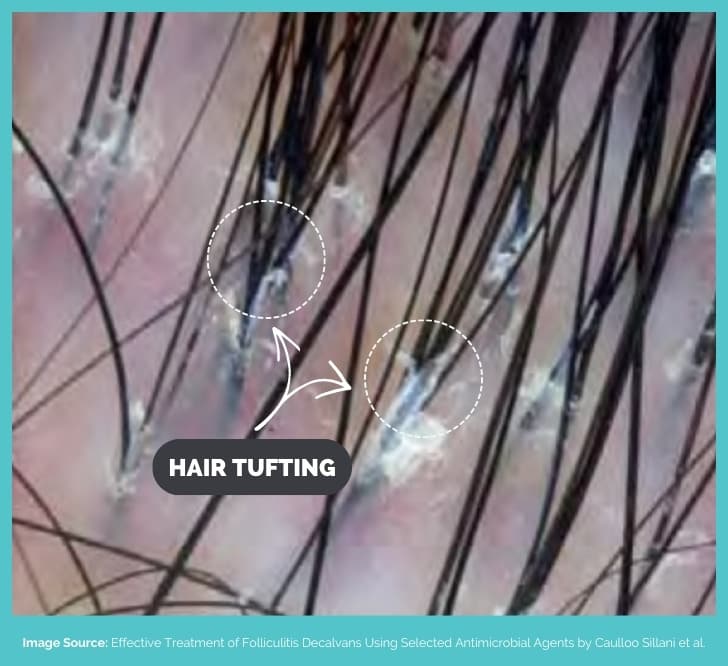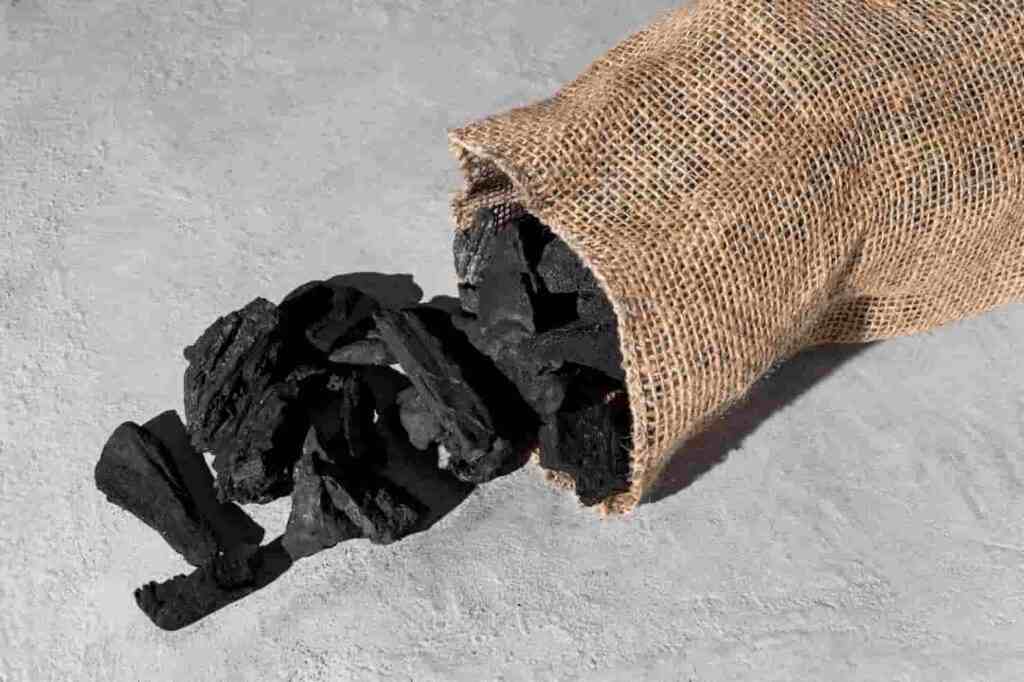Folliculitis decalvans is a type of primary scarring alopecia – an inflammatory disorder that permanently destroys the hair follicle and replaces it with scar tissue.
Although it is rare for this type of hair loss to occur, when it does, it can be very damaging. And rarely enough, folliculitis decalvans has also been associated with squamous cell carcinoma (a life-threatening skin cancer).
Moreover, since it’s scarring alopecia, it may even be disfiguring, causing much distress to the patient. And while this condition was first described in 1888, research on effective treatments for this condition is still lacking.
Regardless, a few researches show the potential promise of some treatment options. That may, in turn, help you control this condition. To learn more about folliculitis decalvans, make sure to read this guide till the end.
What Is Folliculitis Decalvans?
Folliculitis decalvans is a permanent hair loss that mostly affects the crown and occipital areas of the scalp. It can, however, also affect the beard and other parts of the body, including the pubic area, armpits, and legs.
This condition was first described in 1888 by a French dermatologist Charles-Eugène Quinquaud. He called it “’folliculite épilante” – a chronic inflammation of the hair follicles, affecting both young men and women.
Seeing as it how affected human hair, Quinquaud tried to replicate the results of his study by transferring the bacteria to rats, mice and rabbits. However, it did not work.
Later in 1905, a few other researchers named the findings of Quinquaud “folliculitis decalvans,” and that’s what this hair loss is still called.
The inflammatory processes in the body result in the formation of irregular or round/ oval-shaped lesions that spread centrifugally (outwards). These patches are also surrounded by pustules, which can cause pain.

Unfortunately, it’s a chronic condition that can occur in episodes. Also, while it affects both men and women, more men are affected by it, especially those who are young and middle-aged. Other than that, it’s also more prevalent in people of African descent.
What Are The Symptoms of Folliculitis Decalvans?
Following are the signs and symptoms of folliculitis decalvans:
- Pain
- Redness
- Swelling
- Itchiness
- Tenderness
- Burning sensation
- Bleeding
- Scaly crusts
- Felling of tightness
- Pustules with oozing yellow discharge
- Smooth bald areas
- Tufting or polytrichia (multiple hairs emerge from the same follicle)

Even so, folliculitis decalvans may not be accompanied by these symptoms, and you might not experience the discomfort it causes. But, of course, that can change.
What Causes Folliculitis Decalvans?
The exact cause of folliculitis decalvans isn’t known, but the bacteria Staphylococcus aureus (staph) is mainly implicated. It is this very bacteria that most commonly causes skin infections.
However, in the case of folliculitis decalvans, it’s believed that staph, together with an abnormal immune response, results in the destruction of hair follicles.
Some researchers also suggest that it may be due to certain toxic substances that are produced by the bacteria. These are called “superantigens,” and they bind with certain important proteins (major histocompatibility locus or MHC) of the immune system and trigger an immune response.
Other than that, a few case reports also suggest that genetics may be involved in the development of this condition.
How Rare Is Folliculitis Decalvans?
Folliculitis decalvans is a very rare condition. In a 2019 research published in the Skin Appendage Disorders, folliculitis decalvans was the sixth-most common type of alopecia, making up 2.8% of 3,133 alopecia diagnoses.
In general, scarring alopecias, like folliculitis decalvans, are less common than non-scarring alopecias.
Does Hair Grow Back After Folliculitis Declavans?
Since folliculitis decalvans permanently destroys the hair follicles, hair regrowth is not possible. These follicles will also be replaced by scar tissue, so the bald patches will be permanent.
With treatment, however, you may be able to limit the size of the affected area and even transplant new hair into the bald patches.
How Long Does Folliculitis Decalvans Last?
Folliculitis decalvans can last from months to years. Keep in mind that there is no cure for this condition. It’s lifelong and recurrent.
However, with scarring alopecias, there’s an eventual “end stage.” It’s when the condition is at its final stage with no inflammation and no hair follicles in the bald areas.
What Is The Treatment For Folliculitis Decalvans?
With Staphylococcus aureus being held responsible for the development of folliculitis decalvans, antibiotics are usually the first line of treatment.
Depending on your response to the given antibiotics and the severity of the condition, you might be prescribed any of the following:
- Clindamycin
- Rifampicin
- Doxycycline
- Mupirocin
- Minocycline
This is not an exhaustive list, and these drugs can also be prescribed in combination (like rifampicin with clindamycin).
Other than antibiotics, however, steroids are also used to help with the inflammation. Even antifungals, antiseptics and retinoids (oral isotretinoin or Accutane) have been used for treatment.
Your doctor may even recommend the use of tar shampoo since that also has antiseptic and anti-inflammatory properties.

Additionally, laser and photodynamic therapies have also been researched for the management of folliculitis decalvans.
Still, the problem is that these treatments don’t always work. And remission can occur even after treatment.
According to a review published in the Expert Review of Dermatology, while there’s research on different “effective” treatment options for folliculitis decalvans, they don’t work when used. And it’s frustrating for both the patient and the doctor.
It’s possible to have a hair transplant for this condition, but it’s only possible after the condition has been in remission for a few years. Even then, your surgeon may not guarantee complete success.
You can also consider coping with this type of hair loss through caps/hats, scarves, wigs, hair fibres, and/or micropigmentation.
Conclusion
Folliculitis decalvans is a very serious hair loss that can cause much distress. Unfortunately, it can completely destroy the hair follicles in the affected areas, which causes permanent hair loss.
Early treatment is key since it can help control and limit the extent of hair loss. But there too, it’s no guarantee that your treatment will work or stop the hair loss permanently.
In any case, if you’re experiencing abnormal hair loss, make sure to get in touch with a board-certified and qualified medical professional.
Reviewed and Approved by Trichologist Yaprak Yazan
FAQ
Is folliculitis decalvans life-threatening?
Folliculitis decalvans is not considered life-threatening. Still, it’s important to seek treatment as early as possible. There are a few case studies that report an association between this alopecia and squamous cell carcinoma (a form of skin cancer).
Is folliculitis decalvans contagious?
Even though folliculitis decalvans is believed to be caused by bacteria (and immune issues), it’s not contagious.
Is folliculitis decalvans a disability?
In general, alopecia (which includes folliculitis decalvans) is not considered a disability. But it can have a significant impact on your mental health.


